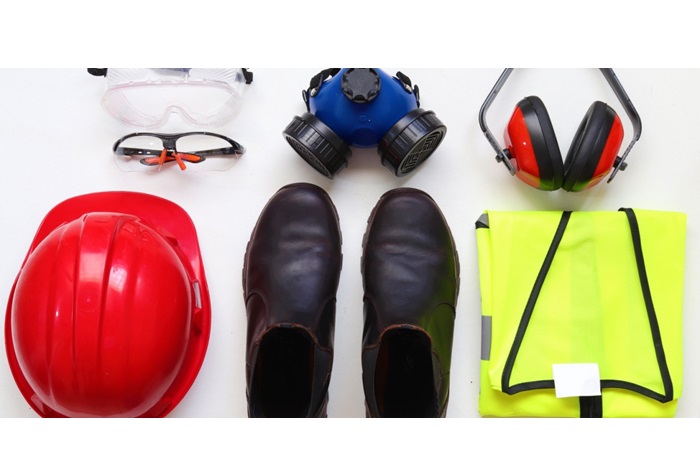
Top 10 Essential PPE for Industrial Safety
Industrial work can be dangerous, and protecting yourself from hazards is important. Providing your workers with the right safety equipment, such as Personal Protective Equipment (PPE), is crucial to preventing injuries, reducing liability, and maintaining a productive workforce. This blog will explore the top 10 essential PPE for industrial safety.
1. Hard Hats: The First Line of Defense
Hard hats are a crucial piece of personal protective equipment (PPE) in the construction, manufacturing, and warehousing industries.
Their primary function is to protect the head from falling objects, debris, and electrical hazards.
When selecting a hard hat, ensure it meets the ANSI Z89.1 standard, which specifies the requirements for industrial head protection.
Additionally, consider adding a chin strap for extra security to prevent the hat from falling off during work.
Hard hats come in different styles, including:
- Type I: Designed to protect the top of the head from falling objects
- Type II: Protects the top and sides of the head
- Class E: Offers protection against electrical hazards up to 20,000 volts
When wearing a hard hat, ensure it fits snugly and is adjusted properly to ensure maximum protection.
2. Safety Glasses: Protecting Your Peepers
Safety glasses or goggles protect workers' eyes from chemical splashes, flying particles, and other hazards.
When choosing safety glasses, ensure the lenses are scratch-resistant, and the frames are comfortable and adjustable. It will help prevent fogging and ensure a secure fit.
Consider providing safety glasses with anti-fog coating in humid environments to prevent fogging.
Safety glasses come in different styles, including:
- Basic safety glasses: Protect against moderate hazards
- Goggles: Provide more comprehensive protection for the eyes
- Prescription safety glasses: Designed for workers who wear corrective lenses
When wearing safety glasses, ensure they fit properly and are worn correctly to ensure maximum protection.
3. Earplugs: Silence is Golden
Prolonged exposure to loud noises can cause permanent hearing loss. Earplugs or earmuffs are designed to reduce noise levels, protecting workers' hearing.
Opt for custom-fit or disposable foam earplugs that meet the ANSI S3.19 standard.
Custom-fit earplugs are molded to fit an individual's ear canal, providing a snug and comfortable fit.
Disposable foam earplugs are a cost-effective option and can be easily replaced when they become worn or damaged.
In noisy environments, consider providing earmuffs, which can be worn over the ears to block out loud noises.
Regularly check and maintain earplugs and earmuffs to ensure they protect workers' hearing effectively.
4. Respiratory Masks: Breathe Easy
Respiratory masks, also known as respirators, are crucial in industries where workers are exposed to airborne contaminants, dust, and fumes.
These masks filter the air, preventing inhaling harmful particles that can cause respiratory problems or even death.
When selecting a respirator mask, ensure it fits snugly over the nose and mouth to prevent air leaks.
There are several types of respiratory masks, including:
- Half-Face Respirators: Cover the nose and mouth, protecting airborne particles and chemicals
- Full-Face Respirators: Cover the entire face, providing additional protection for the eyes and face
- Disposable Respirators: These masks are Designed for single use. They are affordable and convenient.
- Reusable Respirators: Can be cleaned and reused, making them a cost-effective option
Regularly inspect and maintain respiratory masks to protect workers' respiratory health effectively.
5. Steel-Toed Boots: Tough on Toes
Steel-toed boots are a must-have in industries where workers are exposed to falling objects, heavy machinery, and sharp edges.
These boots protect the feet from serious injuries, including toe amputations and crush injuries.
When selecting steel-toed boots, ensure they meet the ASTM F2413 standard, which specifies the requirements for foot protection.
In addition to the ASTM standard, consider the following features when choosing steel-toed boots:
- Ankle support: Provides additional stability and protection for the ankle
- Slip-resistant soles: Reduces the risk of slips and falls
- Waterproofing: Protects the feet from water and moisture
- Insulation: Provides warmth and comfort in cold environments
Regularly inspect steel-toed boots for signs of wear and tear and replace them when necessary to ensure continued protection.
6. High-Visibility Vests: Be Seen, Be Safe
High-visibility vests are essential in industries where workers are exposed to low-light environments, such as construction sites, warehouses, and roadways.
These vests increase visibility, reducing the risk of accidents and injuries. When choosing high-visibility vests, ensure they meet the ANSI/ISEA 107 standard, which specifies the requirements for high-visibility apparel.
In addition to the ANSI standard, consider the following features when choosing high-visibility vests:
- Reflective strips: Increases visibility in low-light environments
- Adjustable Velcro: Ensures a comfortable and secure fit
- Breathable material: Provides comfort and durability
- Additional protection: Consider adding a hood or sleeves for extra protection
Regularly inspect high-visibility vests for signs of wear and tear and replace them when necessary to ensure continued visibility and protection.
7. Gloves: Grip, Protect, and Perform
Gloves are vital for PPE, providing grip, protection, and dexterity for workers handling tools, materials, or machinery.
Choosing the right gloves depends on the task, industry, and hazard.
Opt for gloves made from durable materials such as:
- Leather: Provide excellent grip and protection against abrasions and cuts
- Kevlar: Offers high heat resistance and protection against cuts and slashes
- Synthetic materials: Provide chemical resistance and protection against cold temperatures
Consider adding liners for temperature protection, such as:
- Thermal liners: Keeps hands warm in cold environments
- Moisture-wicking liners: Keeps hands dry and cool in hot environments
Regularly inspect gloves for signs of wear and tear and replace them when necessary to ensure continued protection.
8. Fall Protection Gear: Don't Fall Behind
Fall protection gear, including harnesses, lanyards, and anchors, is crucial in industries where workers risk falling from heights.
Ensure your gear meets the OSHA 1926.502 standard, which specifies the requirements for fall protection equipment.
Additionally, consider the following:
- Conduct regular inspections and maintenance of fall protection gear to ensure it remains in good condition
- Provide training on proper use, inspection, and maintenance of fall protection gear
Ensure proper fit and sizing of harnesses to prevent discomfort and compromised safety
9. Fire-Resistant Clothing: Flame-Proof Your Workers
Fire-resistant clothing is essential in industries where workers are exposed to flash fires, electrical arcs, and other heat-related hazards.
Choose clothing made from flame-retardant materials, such as:
- Nomex: Provides excellent heat resistance and protection against flash fires
- Kevlar: Offers high heat resistance and protection against electrical arcs
Consider adding additional protection, such as:
- Face shields: Protects the face and eyes from heat and flames
- Hoods: Provides additional protection for the head and neck
Regularly inspect and maintain fire-resistant clothing to ensure it remains effective in protecting workers from heat-related hazards.
10. First Aid Kits: Be Prepared
First aid kits are vital to any industrial safety program, providing essential supplies for treating minor injuries, such as cuts, burns, and sprains.
Ensure your kit meets the ANSI Z308.1 standard, which specifies the requirements for first aid kits.
Additionally, consider:
- Restocking the kit regularly to maintain its effectiveness
- Providing training on the proper use of first aid supplies and basic first aid techniques
- Ensuring the kit is easily accessible and visible to workers
Proper training on first aid procedures and supplies is essential to ensure workers can use the kit effectively in an emergency.
Protect Your Workers, Protect Your Business
Safety is everyone's responsibility. Prioritize your workers' safety, and they'll prioritize your business's success. You can reduce the risk of accidents, injuries, and fatalities by providing the right PPE and training.
Get the right PPE and construction materials for your projects from FEPY, the leading e-commerce store in the UAE. Visit FEPY today and source the top-quality construction materials and tools your workers deserve.





























